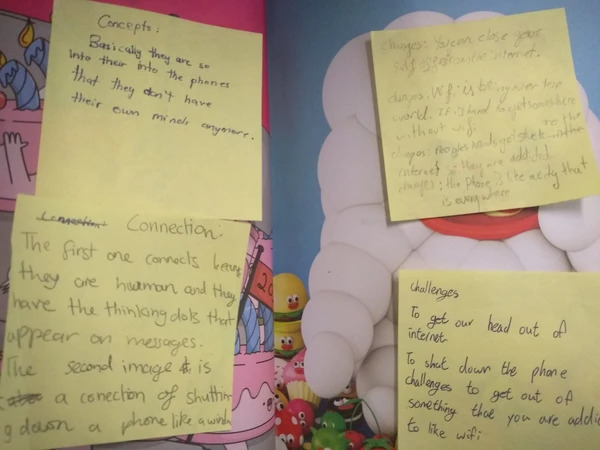
How EYEYAH! can be used in the classroom
‘Philosophy for children’
Also known as P4C, this is a movement that aims to develop children’s cognitive, social and emotional development. P4C is not a lecture-style ‘class’. Students and teachers rather sit together (usually in a circle) and, after establishing an intellectually-safe learning environment, discuss simple yet thought-provoking topics, many of which are child generated.
The teacher can show an image from the magazine and the children are encouraged to think of a question about the image and what it conveys. They then vote on the question they would like to discuss and it goes on from there. This is a child-led sessions, facilitated by the teacher.
Some of the topics raised by children during discussions on the Internet (Issue 01)
- The role of smart-phones in our lives
- Our reliance on the internet
- How phones can be addictive
- Socialising and phones – making friends in person vs online
- Phones as our windows to the outside world
- Online strangers
- E-waste and what happens to devices when we upgrade
Class discussion
Eyeyah can be used in a series of child-led sessions where children are invited to share ideas and comments and discuss the magazine either as a class or in small groups.
Suggested Questions:
- What do you think the magazine is about?
- Is it fiction or non-fiction
- What have you learnt from the images
- What was your favourite part of the magazine
- What parts or page did you not like and why?
From then on, class discussion about phones and the role they play in our lives. This creates a conducive environment to discuss important topical issues raised by some of the artworks such as online strangers and addiction.
Group exercises
Children are placed in small groups and asked to comment on the 4C’s:
- Concept – their thoughts on the meaning behind the image
- Connection – how it relates to them
- Challenges – effects
- Changes – they make want to make
